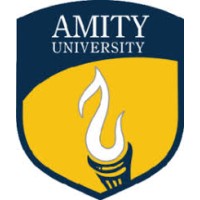
Amity University
Amity University is India's top ranked non-profit private University where more emphasis is given on not only making you academically brilliant, but true leaders and team players, thus preparing you for the real life corporate world. Amity is the leading education group of India with Most Hi-tech Campus. Amity Education Group has come to be recognized for pioneering a global culture in education in India with over two decades of academic excellence. It has received the highest 'A+' Grade Accreditation by the National Accreditation and Assessment Council (NAAC). Amity has campuses in New Delhi NCR Noida, Gurgaon, Lucknow, Jaipur, Gwalior as well as in Dubai and London. Group campuses are also in Singapore, New York, California, China, Romania, and across India. Amity University offers various career focused programs at the Undergraduate and Postgraduate levels in diverse disciplines of higher education. Besides the conventional programs like Engineering, Management, Commerce, Hospitality, Architecture, Interior Design etc. Our focus is on combining knowledge from practice and research with quality teaching and learning. Amity is committed to excellence in the courses it offers, in the experience of our students as part of our community and in the depth and breadth of our research. At Amity we are passionate about grooming leaders who are not only thorough professionals but also good human beings with Values and Sanskars. This is just one of the many reasons why we are consistently ranked Number 1 Non-profit Private University. Today, we are proud that Amity is synonymous with practical; industry focused education, and attracts the best students. The fact that our alumni are working in the best companies across the world is a testament to our extremely talented faculty who inculcate, by example, in each student the spirit of dedication, sincerity and loyalty, and to all the corporates who support our mission with so much enthusiasm.






